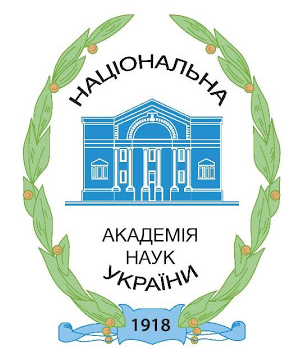Institute of History of Ukraine
National Academy of Sciences of Ukraine
National Union of Local Lore Researchers of Ukraine
Originally a popular scienceedition, and later on a scientific journal,it has its prehistory which dates back to the 20-ies of the 20thcentury. In 1925, in Kharkiv, the Presidium of the Ukrainian Committee of Local Lore Studies was elected within the work of the First All-Ukrainian Congress of Local Lore Researchers. The Presidium began to coordinate and promote the development of the local lore movement in Ukraine. There appeared a need to have a journal as an effective tool for methodological support in the activities of local lore studies centers, and to publish essays, articles, various materials on the results of regional studies and information on the local life.
The Journal was launched as a “magazine for the mass local historians”. The printed body of the Ukrainian Committee of Local LoreStudies was published in Kharkiv during the 1927-1930-ies. Its main chapters were: “General” (the theoretical foundations and general issues of local history were considered); “Methodology of Local Lore Activity” (the materials containing practical methodological instructions on local lore activity were placed); “School Local Lore Studies” (the problems of methodology and results of development of local lore in educational institutions werereferred to); “Our Native Land” (the materials illustrating practical achievements in the local history studies of particular regions of Ukrainepublished); “The Life of Local Lore Studies Organizations” (information on the activity of primary local lore centerswas published), “Instructional Materials” (the instructions and methodological recommendations of the Ukrainian Local Lore Studies Committee were provided).
The Journal contained historical-geographical and ethnographic studies, scientific researches in historical urban studies, folklore, dialectological and ecological topics. The Editorial Board included scientists, public figures, and journalists. The Editor-in-Chief of the Journal was MykhailoKryvorotchenko, the Scientific Secretary of the Ukrainian Committee of Local Lore Studies. Due to lack of funds, the magazine did not appear regularly. During the years 1927, 1928, 1929, 1930, 28 editions were published, combined into 11 issues, with 1000-3000 copies each. In the early 1930-ies because of the funding absence, the establishment of ideological control over local lore in the Ukrainian SSR, political repression against members of the Ukrainian Committee of Local Lore Studies, the magazine ceased to exist.
At the time of the national and cultural upheaval of the late 1980-ies and early 1990-ies, a constituent congress of local lore researchers of Ukraine was held in Kyiv in late March 1990. It established the All-Ukrainian Union of Local Lore Researchers, the goal of which was to buildan independent state with the help of local lore studies. At the same time, the All-Ukrainian Union of Local Lore Researchers proclaimed themselves the successor of the Ukrainian Local Lore Studies Committee. It is logical that the main printed organ of the All-Ukrainian Union of Local Lore Researchers (since 2008 – National Union of Local Lore Researchers of Ukraine) was named “Kraieznavstvo” (Local Lore Studies) from its predecessor in the 1920-ies. The Journal continued its numbering from the 29thissue. In July 1992, the Journal was registered by the Ministry of Press and Information. The first issue of the revived journal was published in 1993.
The Editorial Board of the Journal aims to cover the history of the local lore movement in Ukraine in the 19thand 20thcenturies, to acquaint readers with micro-historical researches in the field of sociology of everyday life, biography studies, and museology. The Journal has permanent thematic chapters covering the entire organizational, scientific and scientific-methodological spheres of the local lore activity: “Chronicle of Ukrainian Local Lore Studies”, “History of Cities and Villages of Ukraine: Historical-Theoretical Problems of Studying”, “Local Lore Studies in Persons”, “Church and Historical Studies: Origins and Contemporary Discourse”, “History of Ukraine in the Light of Regional Studies”, “Museum Studies: History and Problems of Modern Development”, “Home Monuments Studies: Traditions, Experience, Perspectives”, “Regional Aspects of Historic Demography”, “Literature Sources and Biographical Studies”. The articles and analytical materials of these chapters help readers understand the various forms and methods of local lore studies in the 19thand 20thcenturies, get acquainted with the modern achievements in the field of historical regionalism.
The materials of the heading “Local History and Tourism” reveal the historical and tourist attractiveness of certain regions of Ukraine. The sections “Reviews” and “Scientific information” are presentations of new books, introduction to scientific events concerning comprehensive knowledge of the native land. As a printed organ of the National Union of Local Lore Researchers, the Journal in the section “National Union of Local Lore Researchers of Ukraine: Panorama of Modern Life”covers the most significant events and actions of the public organization related to the revival and protection of the historical, spiritual and cultural heritage of the Ukrainian people, the formation of patriotic mood in the society. These headings form the “face” of the Journal and distinguish it from other modern historical periodicals. Since 2005, the Journal is co-founded by the Institute of History of Ukraine of the National Academy of Sciences of Ukraine. The Journal is published 4 times per year.
The chairman of the All-Ukrainian Union of Local Lore Researchers, Academician of the National Academy of Sciences of Ukraine Petro Tronkowas the Editor-in-Chief of the Journal from 1993 to September 2011. In 2012 the Corresponding Member of the National Academy of Sciences of Ukraine, Doctor of History, Oleksandr Reient became the next Editor-in-Chief.
The Journal draws on a large number of authors and correspondents from among scholars, local lore researchers, Doctor of Philosophy Degree students, Master Degree graduate students, educators, archivists, museums, librarians and other professions.
Journal profile at Google Академія





